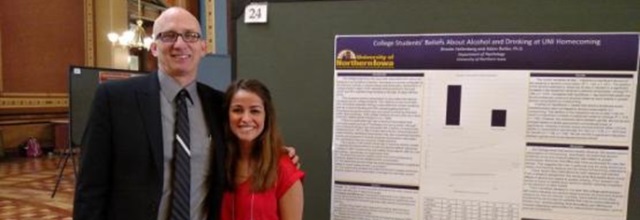Honors Program Theses
Award/Availability
Open Access Honors Program Thesis
First Advisor
Imam Alam
Keywords
Economic development--Religious aspects;
Abstract
A majority of the people in the world are affiliated with a religion. A study about world’s major religious groups found out that there are about 5.8 billion religiously affiliated people, which is about 85% of the world’s population (Pew Research Center 2012). It is important for people to understand how religion affects people’s daily lives, especially how religions affect spending and income. In this study, we are interested in finding whether or not religion has an impact on the economic growth of a country. Past studies have suggested that religion, in specific forms and activities, affects the people’s income and standard of living. The Protestant ethics of hard work and capital accumulation are the oldest and the best-studied examples (Weber 1920). With the world’s population moving between countries and thus changing the religious landscape, it is important to understand how each religious group affects the economy where they live. Previous studies that look into particular religious behaviors and beliefs, such as church attendance and belief in heaven and hell (Barro & McCleary 2003) and specific sects of Christianity (Grier 1997), suggest that religion may affect economic activities, ethics and thus the outcome.
In 2010, the world population was about 6.9 billion of which can be classified into Christians, Muslims, Religiously Unaffiliated, Hindus, Buddhists, Folk Religionist, Jews, and Other respectively with descending order of global population composition. Pie chart in Figure 1 shows the population distribution of the world according to different religious groups. Of these religious groups, only Hindus, Christians, Muslims and Religiously Unaffiliated people lived in countries where its adherents were a majority and all other religious groups lived as minority. For example, about 97% of all Hindus lived in India, Mauritius or Nepal where Hinduism was a majority religion. 72% of all Buddhists lived in countries where a different religious group was majority such as China, which contained of 50% of world’s Buddhist population but only made up 18% of the total population of China. It can be seen that some countries, such as Afghanistan and Ireland, were polarized by one religion and some others consisted of multiple religions (Pew Research Center 2012). In such scenarios, if religion has any impact on economic activity, studying economics by disentangling religious composition may yield results that have sociocultural implications.
In this study, we divide the population of countries into percentage of religious composition. Then we add other indicators of economic growth. By using cross sectional multivariable linear regression to see if religion has an impact on the economic growth. Dependent variable is economic growth which is the per capita GDP growth rate. This study broadly looks at 125 countries of the world and compares their economic growth from 2001-2010 This study is different compared to previous literature because it represents each religion as the percentage of the population adhering to it, which is used as a separate independent variable. Also, while previous empirical papers studied specific region of the world or a particular religion and their denominations, our study covers more countries and major religion. This study aims to establish if a particular religion has positive, negative or no effects on economic well- being of a country. While this project does not have a policy implication, it may provide results that could lead to further studies in the field of economics, sociology or anthropology.
Year of Submission
2015
Department
Department of Economics
University Honors Designation
A thesis submitted in partial fulfillment of the requirements for the designation University Honors
Date Original
2015
Object Description
1 PDF file (22 pages)
Copyright
© 2015 Parash Upreti
Creative Commons License

This work is licensed under a Creative Commons Attribution 4.0 International License.
Language
EN
Recommended Citation
Upreti, Parash, "Does religion affect economic growth?" (2015). Honors Program Theses. 186.
https://scholarworks.uni.edu/hpt/186



